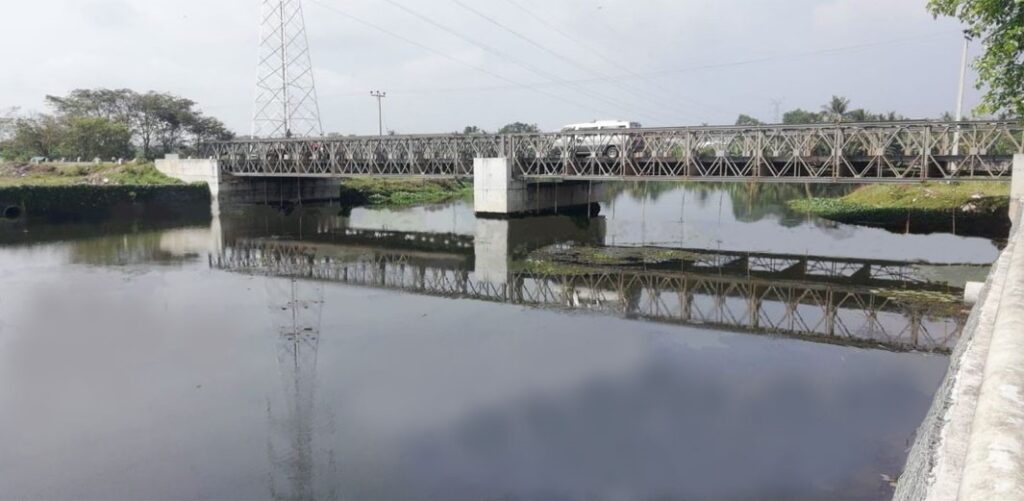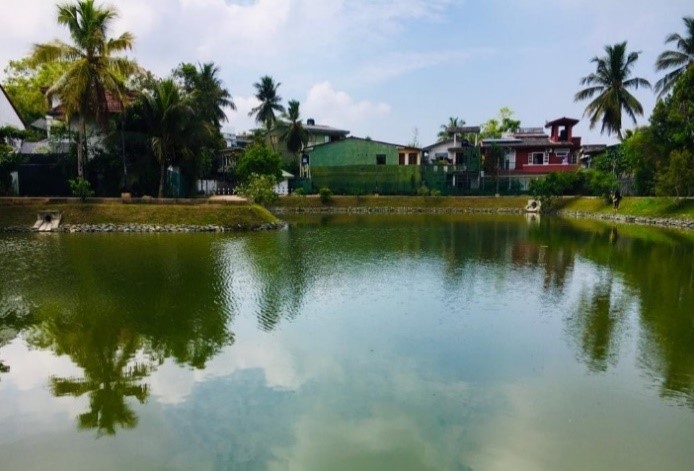Weras Ganga Storm Water Drainage & Environment Improvement Project
The storm water drainage project for the Weras Ganga basin (the project) located in the Northen part of the Bolgoda basin, had selected as a priority project based on feasibility study after comprehensive evaluating of the storm water drainage plans for four objective basins from the viewpoints of economic viability, technical viability, environmental aspect, social aspect and also priority by Sri Lanka authorities.
The Weras Ganga basin is situated in the South Eastern outskirts of Colombo City and adjacent to the Metropolitan area. The Total Catchment Area is about 55.5 km2 (Includes six DS Divisions, Dehiwala-Mount Lavinia, Rathmalana, Moratuwa, Sri Jayawardenapura Kotte, Maharagama and Kesbewa)
Urbanization in the basin is progressing with the sprawl of the city area. Due to the rapid urbanization in and around Colombo city created of unplanned land filling and canal encroachments. The annual average flood damage was estimated at Rs. 253 million (year 2003) for the entire basin. The frequency of inundation was four to seven times / year and the duration of inundation was around one day
Before implementing the project
Before implementing the project - Colombo, Piliyandala Main Road
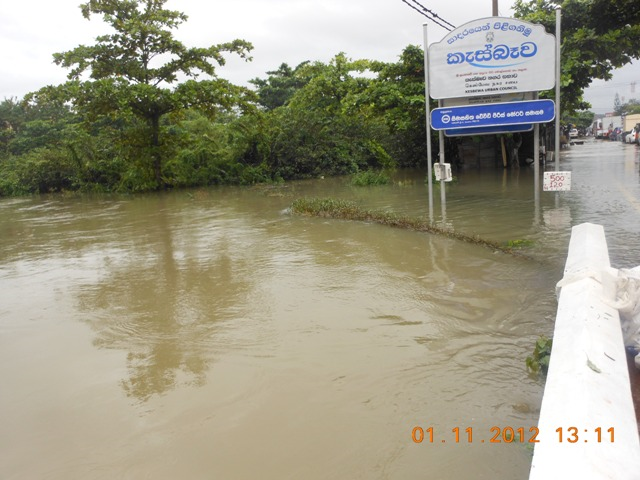
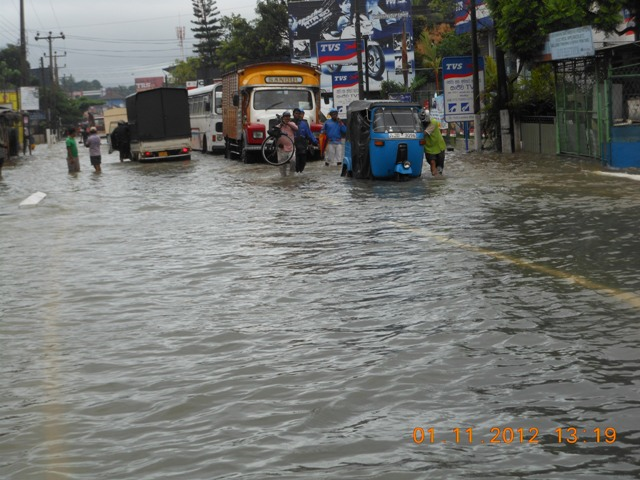
Before implementing the project - Boralesgamuwa Area
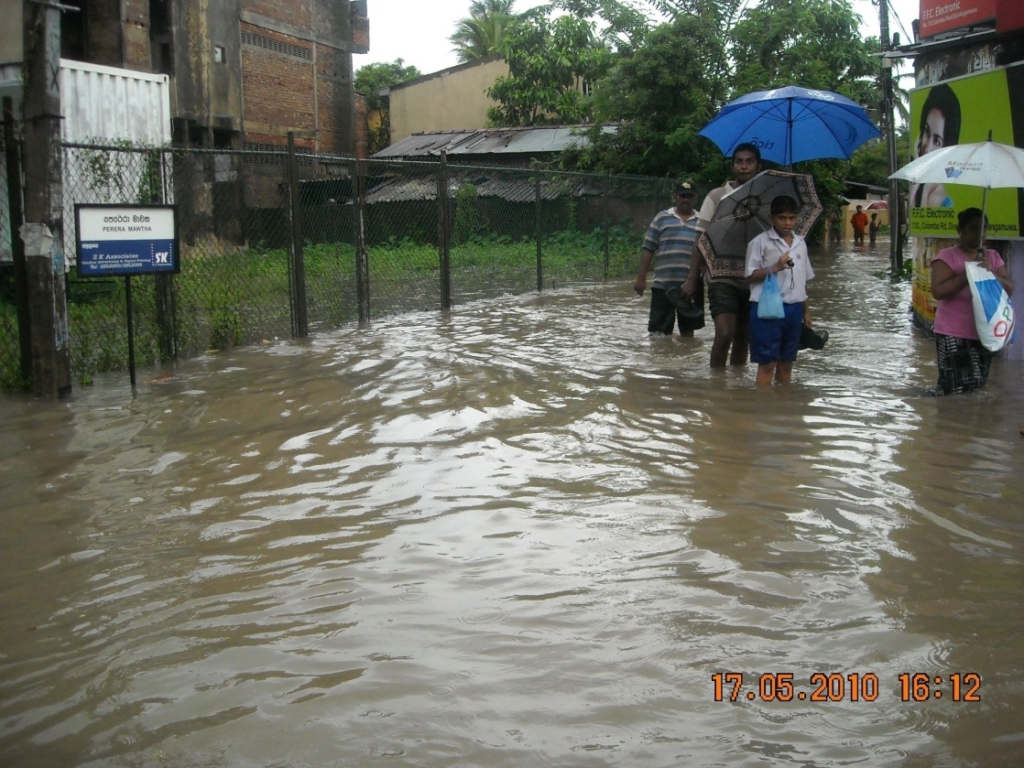
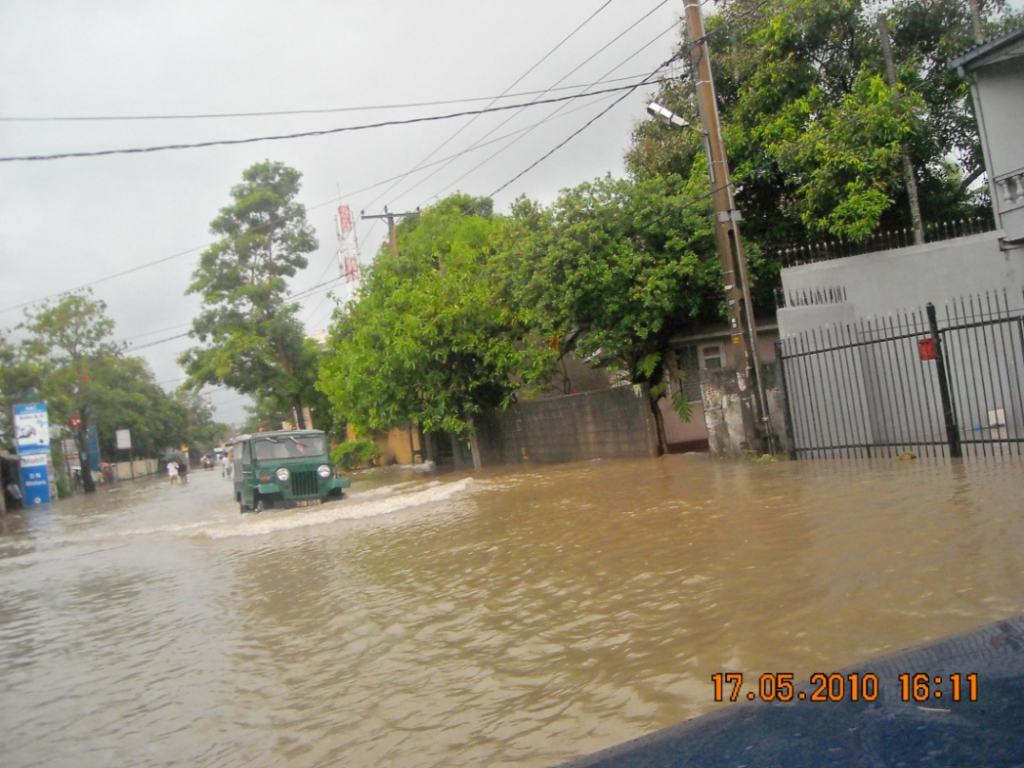
Before implementing the project - Bellanwila Area
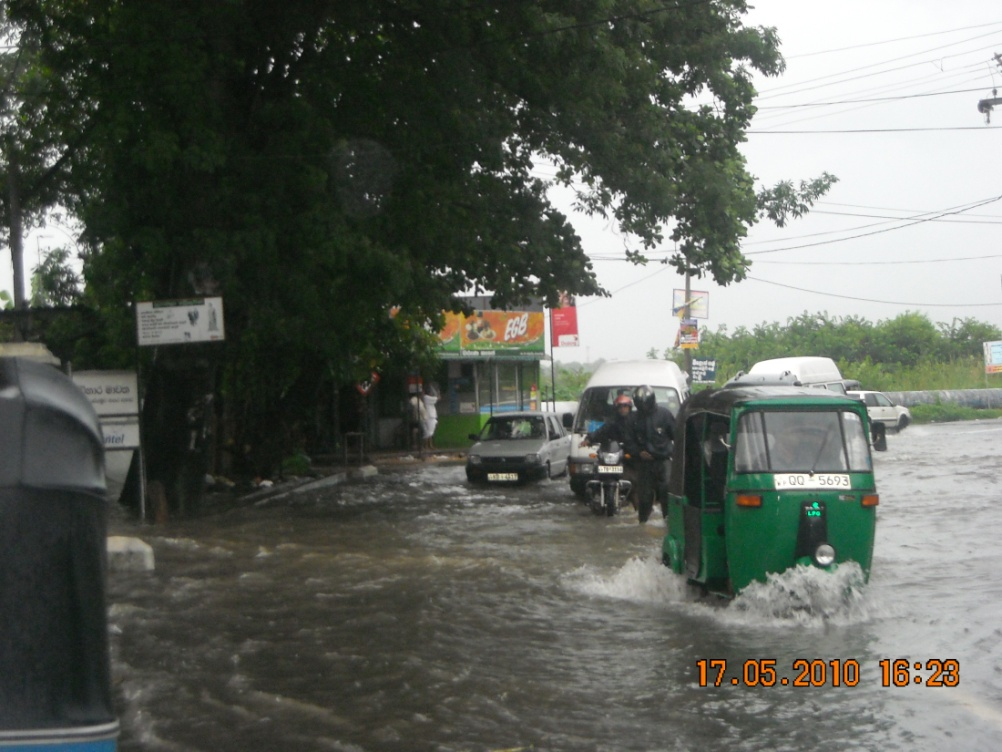
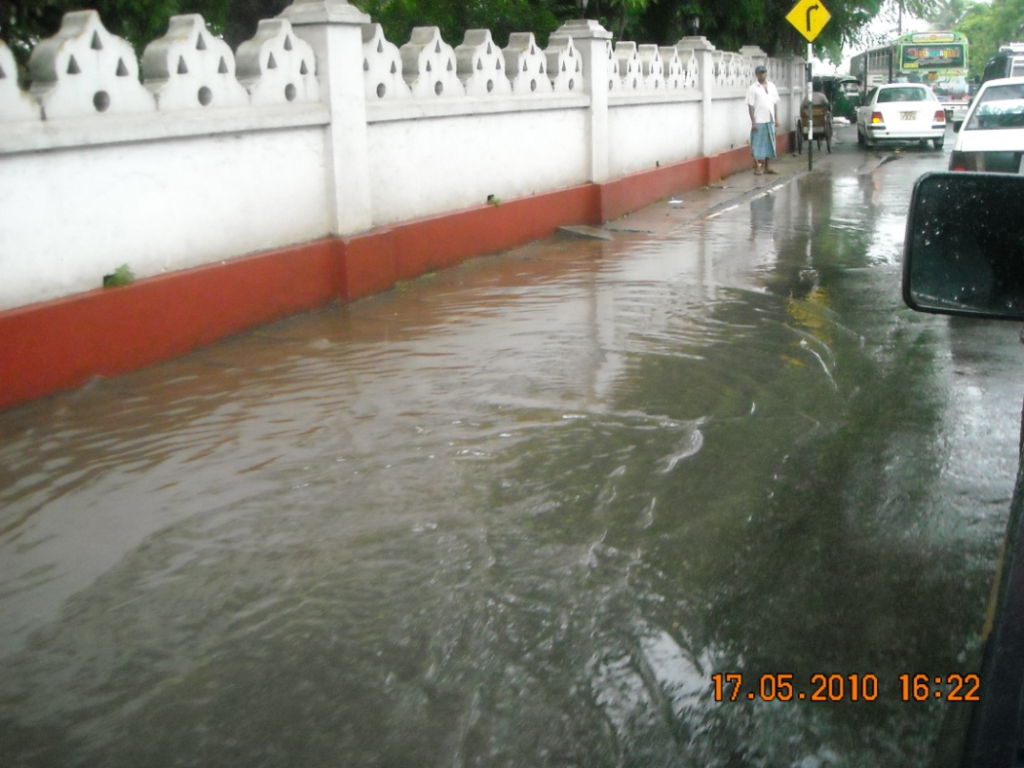
Before implementing the project - Gangodawila – Raththanapitiya Area
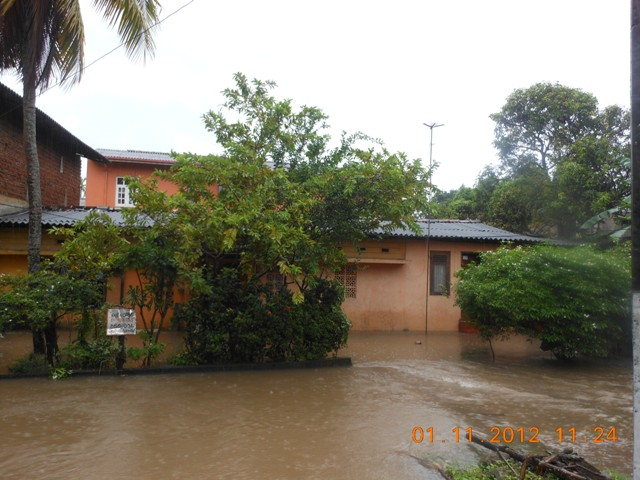
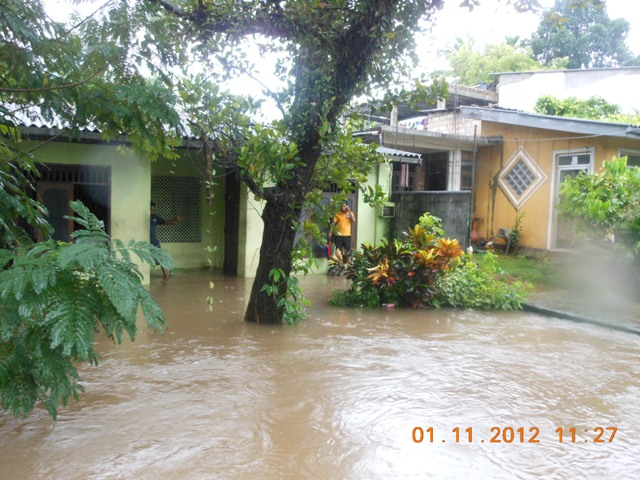
Before implementing the project - Near Sri Lal Hikkaduwa Mawatha
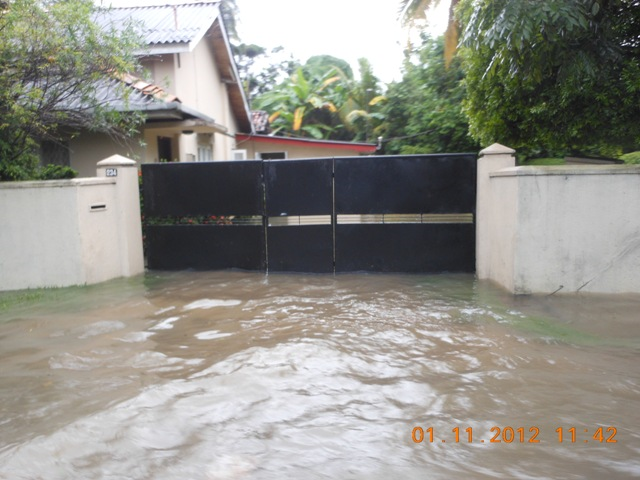
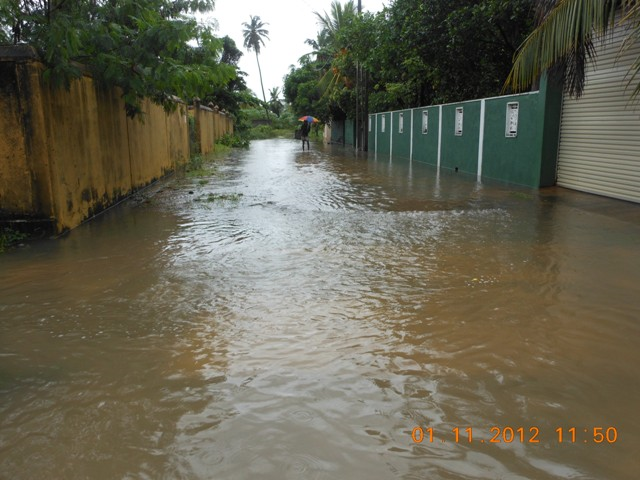
Before implementing the project - Near Near Rubberwaththa Road
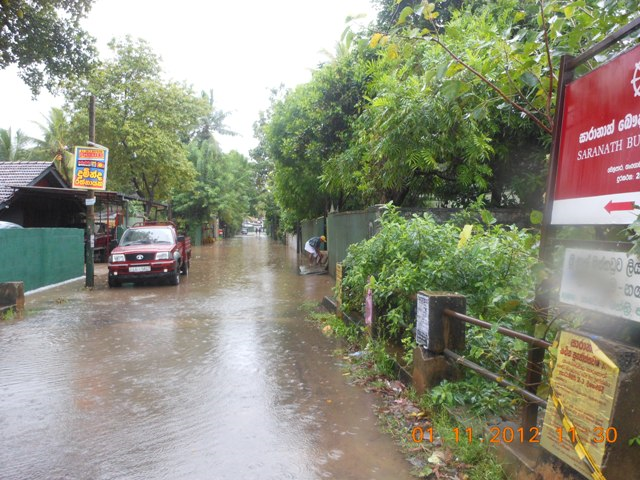
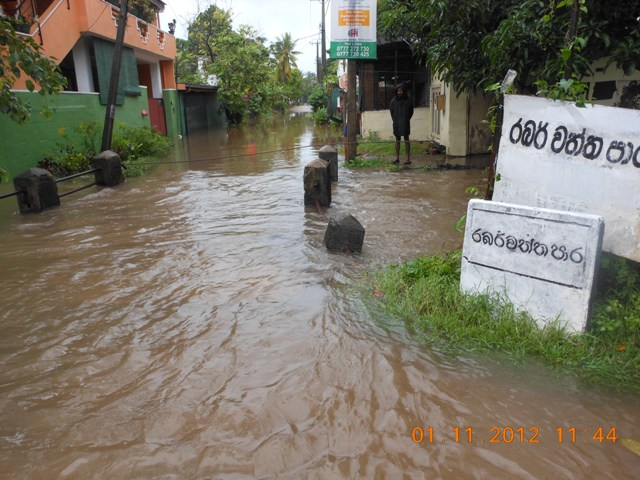
Main Objective
Sri Lanka Land Development Corporation (SLLDC) with the assistance of Japan International Cooperation Agency (JICA) team has prepared a comprehensive Master Drainage Plan for Colombo Metropolitan Region in 2003. The Weras Ganga Basin Storm Water Drainage & Environment Improvement Project is formulated taking into account the above mentioned background and was launched in 2011. The Cabinet approval has been obtained to implement the Weras Ganga Storm Water Drainage & Environment Improvement Project for the estimated cost of Rs.11, 050 Million.
Main objective is to mitigate the massive floods in Nugegoda, Kohuwala, Papiliyana, Raththanapitiya, Delkanda, Bellanwila, Boralesgamuwa, Piliyandala, Bokundara, Karadiyana and Werahera areas with storm water drainage and environment improvements, which addressed the flooding issues of more than 650,000 residents who had been suffered during the last 15 years. It aimed at not only flood damage reduction in the basin, but also conservation of the lowlands which function as a storm water retention area taking into account the future development of the basin, which brought positive impacts to the environment. It is essential that the storm water drainage project should precede the basin development so as to minimize serious storm water drainage problems. The implementation of the project assured the sound and easy development of the basin. In addition, the Project contribute to poverty reduction through improvement of the living conditions of the people affected and benefited by the Project as they are mostly classified into the low-income group.
Weras Ganga Storm Water Drainage & Environment Improvement Project is a newly added Land mark to the corporation history implemented by our in-house Engineering experts with the GOSL funds
Completed Construction Works
Annual Maintenance Work
Maintenance of Drainage Network
Currently engage in maintenance work of drainage systems developed by project to prevent floods and to facilitate the recreational activities of residents of the Weras Ganga Project Area.
Drainage network includes Concrete, Gabion, Sheet pile bank protected & Earthen Main, Secondary & Tertiary canals about 30 km in length. About 250 hec of Retention areas and about 40 hec Lakes with Jogging Tracks (7 Nos), Open Gym Areas, Vehicle Parks, Shops & Open Spaces
Maintenance of Weras Ganga
Water hyacinth or ‘Japan Jabara’ (Eichhornia crassipes) is a free-floating and flowering invasive aquatic plant present in many water body ecosystems in Sri Lanka. Eventually, it became a common invasive plant in most water bodies. It typically spreads very quickly, mainly by runners (stolons), which produce new plants and doubles itself within 5–15 days, and by producing seeds through flowers.
Water hyacinth has many negative environmental, social and economic impacts. The key environmental impacts include: increased water loss in water bodies due to evapotranspiration, decline in the diversity and abundance of aquatic life, decline in water quality, and increased siltation. The lack of clean water, limited access to water points for domestic and livestock use, and the disappearance of the aesthetic value of water bodies are the main social impacts. And water loss in tanks due to evapotranspiration, reduced fish catches and interference with irrigation (blockage of canals) are the leading economic impacts, which have direct effect on agriculture.
Currently we are engaging in Cleaning of Weras Ganga Swamp (approximately 88 hectares) between Pitawella Bridge and Kospalana Bridge by using boats daily which required to maintain the free flow of water. SLLDC spends a considerable sum of money and effort on removing them

